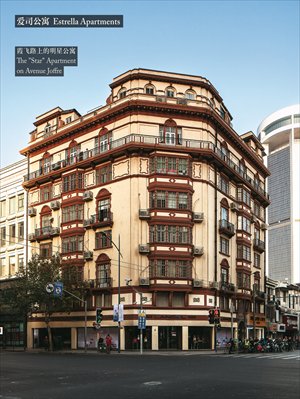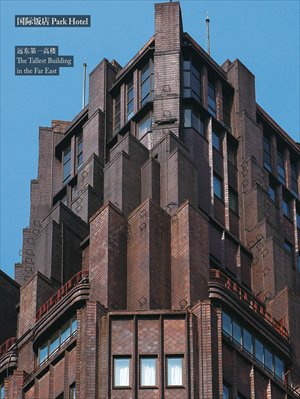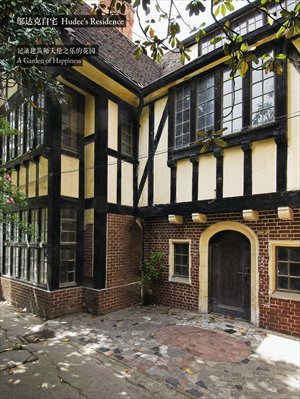The town that László built
The best way to remember an architect is to see his or her surviving works in their natural surroundings. Thankfully, Shanghai citizens have plenty of opportunity to do just this with the architectural masterpieces of Ladislaus Edward (László) Hudec which are dotted all around the city.

2013 sees the 120th anniversary of the birth of the Hungarian national Hudec (1893-1958), and who lived and worked in Shanghai from 1918 to 1947. During that time he left the city more than 100 buildings, many of which are now recognized as iconic designs. Among the more famous are a number listed as Shanghai Municipal Relics for Preservation, and include the Park Hotel (170 Nanjing Road West), the Grand Theater (216 Nanjing Road West), the Normandie Apartments (1850 Huaihai Road Middle), the Estrella Apartments (148-150, Ruijinyi Road) and the "pigment magnate" D.V. Woo's former residence (333 Tongren Road), once referred to as one of the most luxurious residences in Asia and in which the merchant and his wife committed suicide in August 1966.

The right time
And to commemorate the influential draughtsman, a bilingual (English and Chinese) book entitled Shanghai Hudec Architecture has just been published by Tongji University Press.
"Hudec is very important in the architectural history of modern China," Hua Xiahong, one of the authors of the book and an associate professor at the college of architecture and urban planning at Tongji University, told the Global Times. "At the 'right time,' he went to the 'right city,' and his legacy is inexplicably intertwined with Shanghai's urban history." Hua has been researching Hudec's architectural legacy in Shanghai since 1999.
"Going through the sources, I have ascertained he worked on 53 projects involving 110 buildings, nine of which have since been demolished," said Hua. In the book, 27 of Hudec's signature buildings are represented with photos, a written introduction, hand-drawn copies of the original plans and guide maps for visiting.
In a preface to the book, professor Zheng Shiling, from the Chinese Academy of Sciences who serves on a government committee for protecting historical buildings, writes: "Hudec was fostered by Shanghai and he created the modern style for Shanghai. He was good at learning from world architecture and captured the spirit of the time. Like an encyclopedia of architectural styles, his style went through neo-classicism, expressionism, Art Deco and modernism, which not only reflected European and American influences, but also the architect's personal creativity."
Born in present-day Slovakia (then Austro-Hungary), in 1893, Hudec received a qualification in carpentry, masonry and stonecutting before studying in the architecture department at the Hungarian Royal Joseph Technical University in Budapest. In 1914 he enlisted to fight in World War I but was captured on the Russian border and spent two years in a Siberian prison camp. He managed to escape and by various twists and turns ended up in Shanghai where he set up his own office in 1925.
However, it wasn't until 2008 and a "Year of Hudec" events including Sino-Hungarian cultural exchanges and a Slovakia-financed documentary called The Man Who Changed Shanghai, that Hudec's impact on the city was fully acknowledged. The same documentary was screened inside the Slovakia Pavilion at World Expo 2010 in Shanghai.
"As a star architect in 1930s' Shanghai, one highlight remains the harmonious combination of his buildings with their environment," added Hua.
Landmark buildings featured in the book include office buildings, villas, hotels, churches, hospitals, schools, factories and apartments. For example, the Moore Memorial Church, located at the junction of Hankou Road and Yunnan Road, is still the largest Southern Methodist church in China. And the Christian Literature Society Building and China Baptist Publication Building, both on Yuanmingyuan Road in the Rockbund area, are signature buildings of the Art Deco and expressionist styles, respectively.

Memorial hall
The book also illustrates the three-story "Tudorbethan" style villa located at 129 Panyu Road where Hudec lived with his wife Gisela Meyer and their three children from 1930 to 1936.
And now this former residence of Hudec (one of three in Shanghai) is being renovated and will be open to the public as the Hudec Memorial Hall. The project was initiated with the support of a Hunan-born businesswoman and former fashion designer Liu Suhua, and is supported by the Changning district government.
Photographs and documents relating to Hudec and his family will be on show at the hall which is expected to open in the middle of this year, according to Liu.
"Architecture is the carrier of history and of the lives of generations of people," added Hua. "The book presents a good opportunity for city dwellers to be inspired to explore other excellent architects of the same period in Shanghai, wherever they were from," said Hua.
Zhang Cui, who oversaw the editing of the book at Tongji Univeristy Press, gave her opinon on the book. "This study of Hudec is objective and pragmatic," she said. "As a productive architect, Hudec remains a cultural symbol of the emerging wave of architecture in Shanghai in the early 20th century."